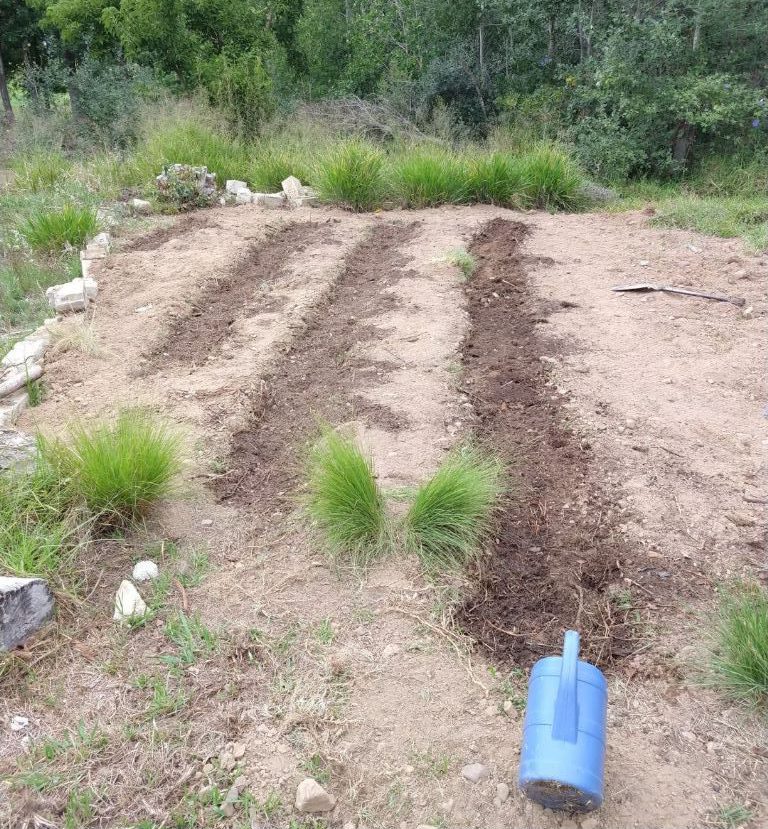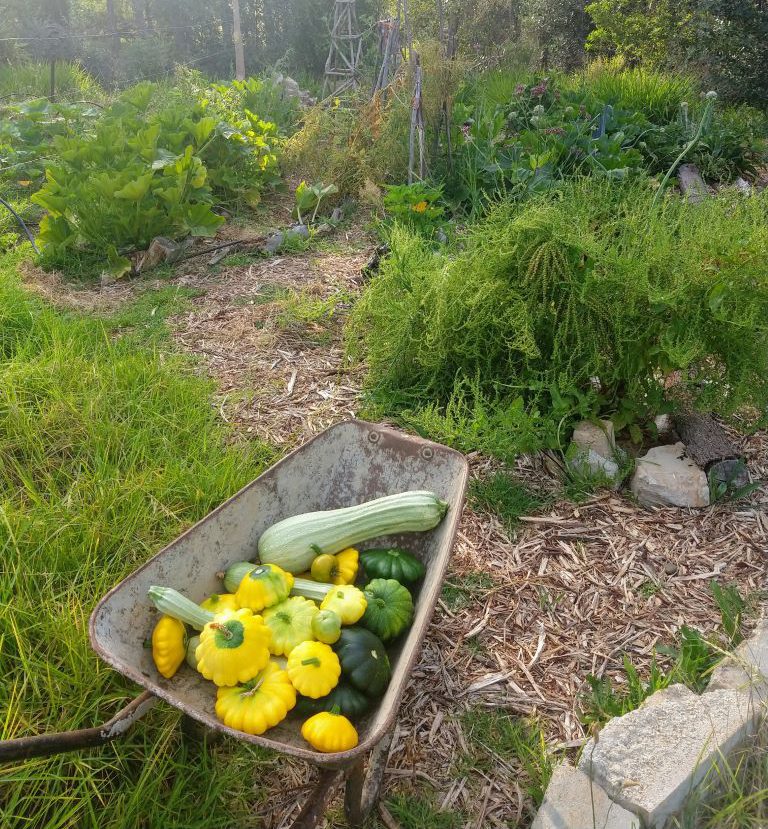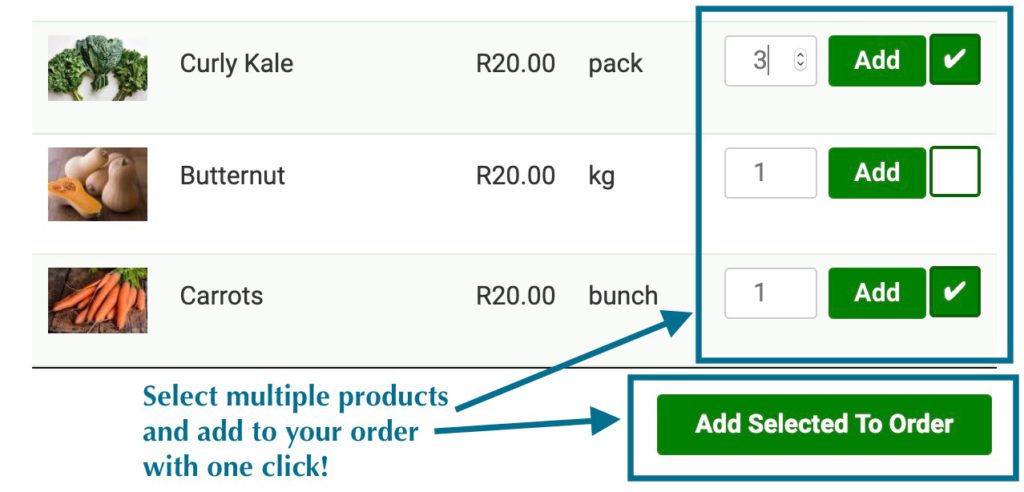How long does it take to gow a food garden that can seriously reduce your grocery bills and provide a constant supply of organic vegetables and fruits?
We reckon about 9 months, putting in just 2 hrs a week on average – with a bit more effort upfront.
And whats better, with careful selection of plant species used in the polyculture, there should be a continual supply of food in the future with even less effort.
Don’t believe me? Here’s how.
You’ll need:
– 1 or 2 able bodies with decent spades
– Seeds (preferably heirloom) of plants you like to eat & grow well in your climate. A tip from Dr Greenthumb: if you compost your kitchen scraps then it will probably already be full of seeds of the stuff you like to eat
– A load of compost. If you can’t get compost then you can use your kitchen scraps
– A part of your lawn you want to sacrifice in the name of food security
Bed Preparation Method:
- Dig some trenches about 30x30cm (1ft x 1ft) – we made 6 of them, about 9m long.
- If you have compost or well aged manure available, then go ahead and fill the trenches with a mix of the soil you dug up and the compost. If you don’t have compost, then you can make your own compost in the trenches. Simply collect all your kitchen scraps / fruit & vegetable waste and each day empty into a trench with a few spadefuls of soil on top. Continue for a few months until all your trenches are full.
- Optional: To ensure your soil has all the micronutrients needed to grow healthy plants, some good supplements to add include ground kelp (seaweed), mushroom compost, compost teas or worm castings
- Cover the trenches in a thick layer of mulch so that the soil and micro-organisms are protected from sun and wind. You can use woodchips, dry grass, straw, cardboard – the important thing is that no bare soil is exposed.
- Water well, either with installed irrigation or from a hose pipe or watering can.
- If you are patient, give the soil some time (up to a few weeks) to settle and to give micro-organisms time to colonize the soil.
Planting & Seeding
We planted a mixture of winter vegetables as seeds and transplanted seedlings. If your mulch is very thick then you will need to thin it in areas where seeds are being planted. Taller transplanted seedlings should have their leaves above the mulch.
Seeds planted
Pak choi
Spring onion
Kohlrabi
Kale
Red Lettuce
Swiss Chard
Cabbage
Leeks
Herbs including thyme, rosemary & dill
Cuttings and seedlings planted:
Comfrey – a super plant that improves the soil and feeds other plants around it
Lemongrass
Rosemary and perinneal basils to attract beas
Passionfruits vines on the surrounding fences
Irrigation: If you don’t live in a wet climate, then you will need irrigation of some kind. Micro-irrigation methods are usually the most water efficient but do require regular maintenance of the drippers or sprayheads. Also, most micro-irrigation systems have much lower pressure requirements than traditional broadcast sprinklers. Read our post on micro-irrigation techniques here
After just 2-3 weeks we had a constant supply of fresh leaves for our salads & were very pleased to see our kitchen compost used on the garden was full of seeds – courgettes, tomatoes, pumpkins popped up all over the place. Unfortunately after the first Winter frost most of these died.
In early spring, I seeded 6 different squashes, melon, courgette, various herbs & 4 heirloom tomato varieties. A large & very vigorous pumpkin plant had grown from our kitchen compost used on the garden. A very simple seeding method was used, make holes about 45cm apart with a stick. Drop seeds in holes & rake over. Done.
2 months later, we have a constant supply of vegetables & we’re supplying our local twice weekly farmers market with our surplus of courgettes and pattypan squashes. Anything we’re not growing gets puchased with the proceeds, so our fresh food bill is now effectively zero. We have glorious big red tomatoes, huge cabbages, butternuts, onions, spinach & herbs & the first passion fruits will be ripe soon.
We also have many plants going to seed now its summer; onions, coriander, spinach and pak choi which will seed themselves throughout the garden & ensure the next generation of annual vegetables. As heirloom plants seed and reproduce themselves over and over, we will never need to dig or go to the effort of planting in these beds again.
Planting a food forest: In between the annuals we have started to plant longer living perinneals & trees as the emergent future food forest. Pomegranate & almond trees, gojiberry, blueberry and mulberry cuttings. These will take a year or two before they start producing, but they will provide a long term food supply as part of a vibrant ecosystem with almost no inputs in the future. Now read our post on food forest planning & planting!



